How can you plant a plum?
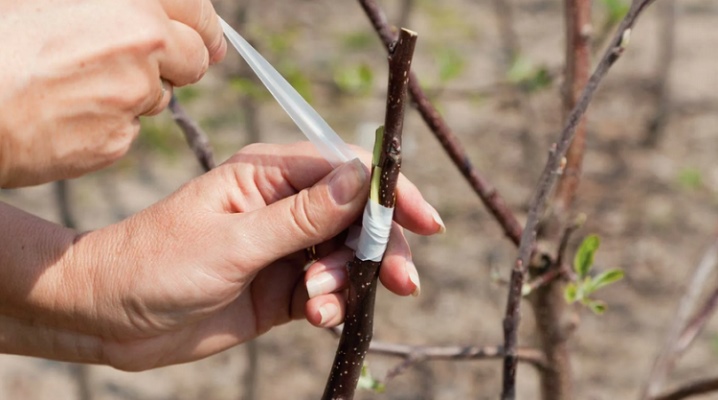
To ennoble plums, improve the variety and yield, as well as increase frost resistance and resistance to pests, many gardeners graft trees. Although this job is not very difficult, it requires some knowledge. The acquired skills will allow the manipulation to be carried out correctly, which will lead to the desired result.
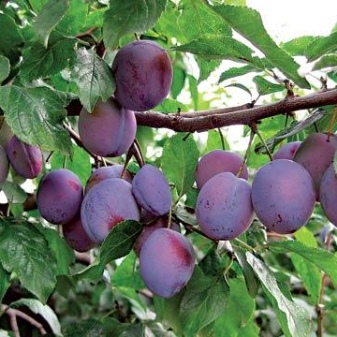
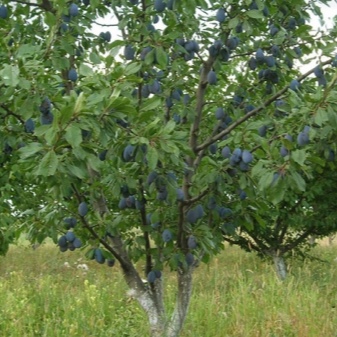
The need for a procedure
Grafting on a species similar or close to the culture is considered an effective and uncomplicated method that allows you to propagate fruit trees with suitable characteristics, improve the taste of fruits, increase productivity, and increase the time of fruiting. Beginners, and even experienced gardeners, need to understand the essence of the procedure itself, and perform all actions step by step using a suitable tool. Beginners in this business will be helped by sequential instructions for performing work.
Grafting is considered one of the methods of vegetative propagation of plants. In this case, the plum cuttings are implanted on the maternal branch, which will be responsible for further vegetation and nutrition of the scion.
The advantages of such manipulations include:
- carrying out the cultivation of self-seeding;
- the possibility of breeding varieties (rare, valuable or favorite);
- adaptation of plums to more rapid ripening under certain climatic conditions;
- the likelihood of bringing an old tree back to life;
- the ability to grow fruiting shoots.
Often, grafting a tree in spring is the only way to save a crop or variety type from damage by frost, rodents or other unfavorable factors.

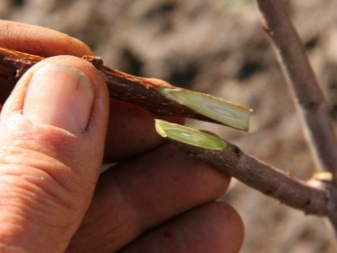
It is no secret for many gardeners that it is sometimes not so easy to achieve a good full-fledged harvest. It is necessary to carry out preventive work, apply mineral fertilizers, organic matter, get rid of weeds, thin out branches, process crops from pests. If you want to update the tree, many gardeners are vaccinated.
Thanks to such actions:
- an overgrown culture is being renewed;
- the palatability of fruits improves;
- the term of their fruiting is extended;
- healing of branches after mechanical damage is accelerated;
- plant immunity increases;
- the old neglected orchard is being restored.
If you wish to get a full harvest in the future, and to renew the tree, the plum is grafted onto crops that are classified as pink. It is better to buy the scion in horticultural farms, from experienced gardeners, or leave it after a planned pruning. Several grafts of different varieties can be performed on one tree, which allows you to diversify the grown crop. In some cases, at least 4 different varieties can be grown on one tree.
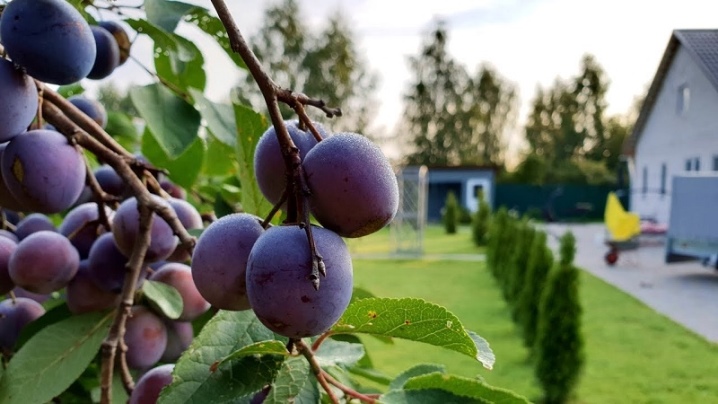
Timing
To plant a plum grown from the root, you need to find out what the procedure is, understand its features. The best time for such work is considered early spring at the beginning of sap flow. At this time, there is a set of strength and an increase in the volume of branches. Vaccinations in the spring are best done for novice inexperienced gardeners, since it can be done in a simple way. During this period, the survival rate of the culture is about 95%. The spring procedure is performed depending on the regions. Do it only after the retreat of severe frosts at night. The most suitable time for this is from March to May.Spring grafting will allow you to conduct tests and determine the need to breed a certain variety and update the garden plot. In this case, the first crop can be removed for 2 or 3 years.
The percentage of survival rate of plums in summer will be lower, it is slightly more than 80-85%. When carrying out the procedure at this time, a cosmetic defect is least visible at the place of fusion. June and July are considered the optimal time for the summer procedure. With the onset of autumn, crops are grafted from September 10 to the last week of October. It is in October that the intensity of sap flow decreases, but for a successful procedure there is still a sufficient amount of necessary nutrients for nutrition. The main risks are autumn frosts or sudden cold snap. For a not very strong rootstock, they can be disastrous. These terms apply in the Moscow region, in the middle lane and other regions.
An important factor is the recommendation to vaccinate on the growing moon. It is also advisable to avoid doing manipulations on a waning or full moon.
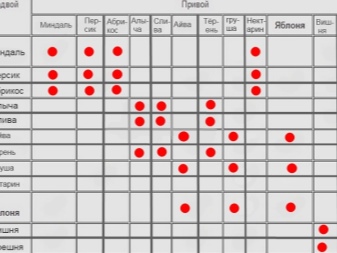
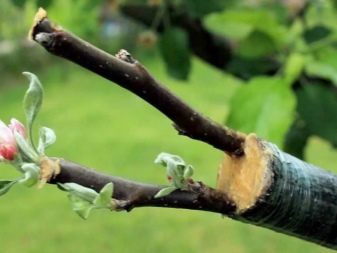
Scion selection and storage
Getting a positive result largely depends on the preparation of the material. During storage, the scion is protected:
- from freezing;
- drying out;
- damage by rodents;
- swelling of the kidneys.
Creating optimal storage conditions will allow you to get a whole and healthy material for crossing.
You can procure material yourself.
- For harvesting cuttings, a healthy tree is chosen that gives a good harvest. It is desirable that his age was from 3 to 10 years.
- For the scion, it is worth choosing strong, healthy annual shoots. They should have short internodes. Their diameter should be up to 7 mm.
- It is important that the scion contains at least 4-5 buds.
- When cutting the cuttings, it is advisable to keep them in weight, being careful not to touch the cut area.
Having prepared the cuttings, they are tied with twine, attaching a label with the name of the crop variety.
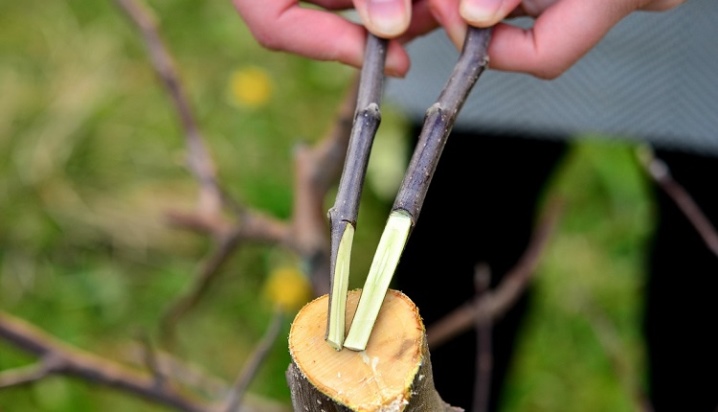
In order not to miss the period of sap flow, cuttings for grafting plums should be harvested in the fall. As soon as the leaf fall ends and until the very frost, you can cut it. A pruner is better suited for this. Using the tool, the separation of annual healthy shoots is performed. The gardener needs to choose smooth shoots with growth buds of about 1 cm in diameter and up to 40 cm in length.In the opinion of experienced specialists, for better engraftment in the spring, it is better to cut a tree from the south or west side. It is important not to choose branches with formed fruit buds.
An insulated shed or cellar may be suitable as a storage place. The optimum temperature for this is considered to be 8-14 degrees Celsius. The graft is placed in containers with moistened sand or with a mixture of sand and peat. It is necessary to cover the containers, protecting them from light, otherwise buds or roots may appear on the branches. With spring harvesting, pruning is done only before the start of sap flow. Freshly cut cuttings are wrapped in plastic wrap and left under the snow. When the snow melts, you can store them in the refrigerator under the freezer. In this place, you can store the scion cut in the fall, but this is not always convenient, since it takes up a lot of space.
When removing the cuttings for storage, check them for vitality by bending. The branches that did not break at the same time are left.
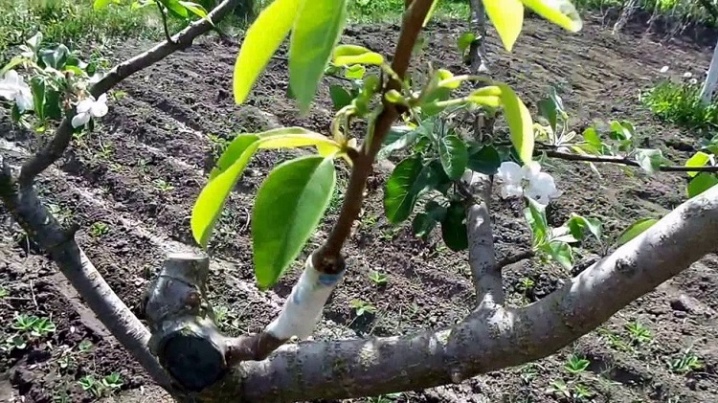
What can you vaccinate on?
Plum can be planted in different seasons, except for winter. In this case, it is imperative to take into account the temperature indicators. Adverse factors include sudden frosts, heavy rainfall or heat. The survival rate is more influenced by the health of the rootstock itself. In case of illness, the tree is fed with organic fertilizers, treated with pests and left alone until it is restored.
You can plant a plum on a similar tree, as well as on related crops:
- for cherries (regular varieties and felt);
- on cherry plum;
- apricot;
- thorn (prickly plum);
- mountain ash.
In this case, it is advisable to use wild or semi-culture of cherry or cherry plum for this. A more correct option is considered to be grafted into one species, while the rootstocks will be able to fully retain the characteristics of the selected variety.
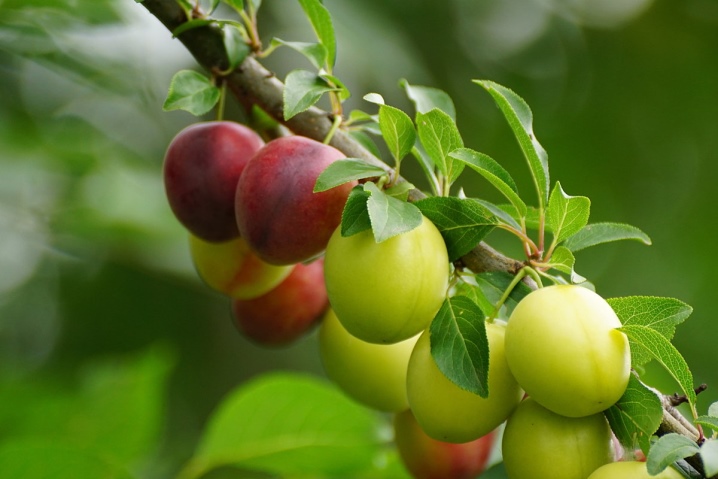
Vaccination methods
In nurseries or in your own garden, several methods of grafting are used. Some of them are more suitable for inexperienced gardeners, other methods can be mastered by more experienced professionals. Basically, gardeners have certain preferences, choosing one or another option that is suitable for a particular person. For those who were far from breeding before, it is better to start doing work using simple methods.
It is possible to inoculate a fruit crop using different techniques, but before the procedure itself, it is imperative to prepare cuttings and rootstocks, to study how the slices are combined, how the implantation sites are processed. With standard grafting, the stalk, that is, the scion, is laid in the crevice of a branch, hemp or wild-type trunk. After this place is sealed and sealed.
In this case, the stock can be a wild or a plum tree, which has good immunity.
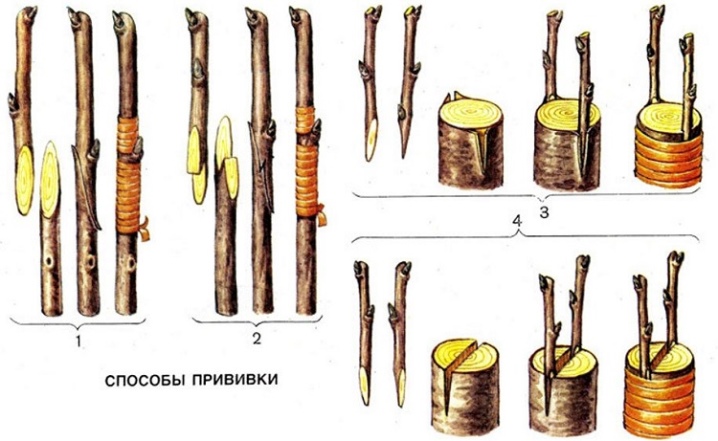
Into the cleft
The cleft inoculation can be done at any time, except in winter. This method is one of the simplest and most affordable.
To do everything right, you should follow the detailed instructions with directions.
- It is necessary to cut the stock, making the cut straight. A pruner can be used as a tool, a sharp knife is also suitable.
- Split it in the middle to a depth of about 5-7 cm.
- The graft is inserted into the split.
- Using garden pitch, wax, plasticine or PVA glue, close the wound.
To seal the adhesion of the cambium, it is necessary to squeeze the incision, wrapping it with electrical tape, scotch tape, twine, plaster or FUM tape is also suitable.

Copulation
A special feature of this method is the use of a rootstock scion with a similar diameter. There are several technology options. With simple copulation, a symmetrical cut is made on the handle and on the base. At the same time, it is important that these elements are securely fixed. Copulation is considered the only technology that allows you to plant plums in the winter.
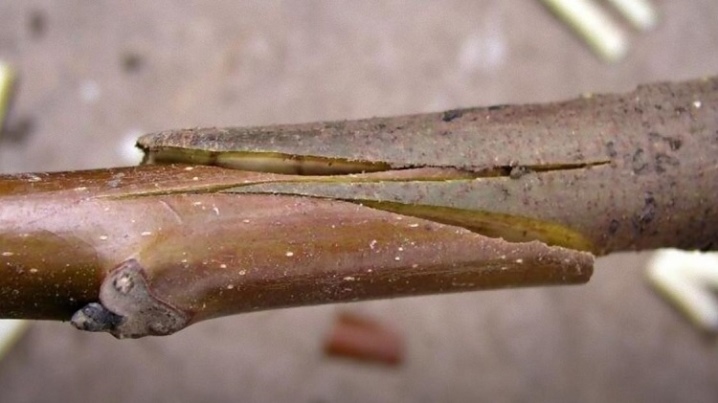
For the bark
For summer residents, the method of grafting for the bark may be suitable. This method is similar in technology to cleavage. The only difference is that the stock is left intact. This method consists not in splitting the middle, but in carrying out vertical half-cuts of the bark along the edge, in which cuttings-wedges are implanted. After that, it is sealed with a seal.

Side cut
The most popular methods chosen by novice summer residents are side cutting and splitting. This method is suitable for rejuvenating adult perennial seedlings. After the preparation of the cuttings, a double-sided cut is made, while not only the bark is cut into the rootstock, but the wood is also captured.
Manipulations are done by inserting a sharp instrument at an angle of 30 degrees. After that, it is necessary to insert the stalk into the incision by 2-3 centimeters, combining the layers on one side. The place is fixed and covered with garden varnish with further warming with a film.

Budding
Budding is a kidney inoculation. In this case, the peephole is involved, not the handle. The eye is a bud with a woody base. It is inserted into the prepared "T" -shaped incision on the rootstock. This method is used more often during summer work with active sap flow. Another method can be practiced using a sleeping kidney, it is carried out in early spring.
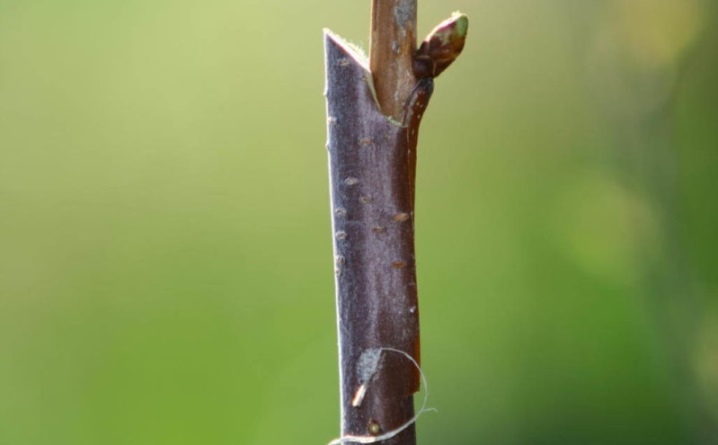
By the bridge
This method is suitable for carrying out manipulations after damage caused by hares or mice.Having chosen it, it is necessary to inspect the trunk and cover up the damaged areas using garden varnish or oil paint. It is necessary to try to do everything so that the sap flow is restored, this will lead to the supply of substances necessary for nutrition to the crown.
To carry out the procedure, it is necessary to clean the area and remove the var used earlier in the form of an ambulance, make cuts in the shape of the letter "T" up to 4 cm long. Further, on the cuttings you need to make cuts (oblique) on both sides, insert into the previously prepared places, slightly pressing. The bridge in this case should bend in an arc.
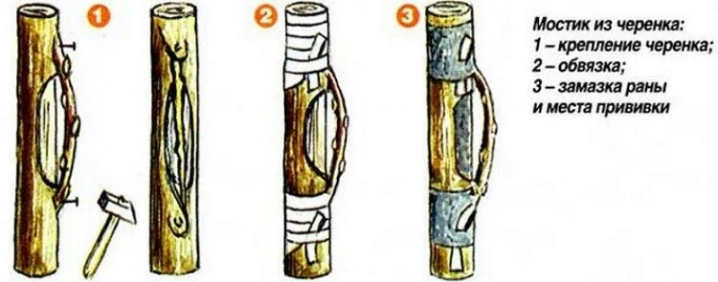
Follow-up care
After carrying out such manipulations, the plum must be looked after. It is important to check the condition of the vaccination site. The first results can be seen in a few weeks. If an outgrowth formed at the junction, while the branch remained elastic, it means that the scion was able to take root well. The appearance of leaves from the bud can also tell about this. The harness is loosened or completely removed. If several rootstocks have been made, the best ones are chosen, removing the excess ones, covering the incision with garden pitch.
After such an operation in the spring, the plants weaken, so in the summer it is advisable to pinch the tops of these cuttings. And also carry out the removal of excess growth, excess fruits and inflorescences. Such procedures will make it possible to make the plant stronger in the future, to accelerate its fruiting and to endure the winter cold well. In the fall, potassium-phosphorus fertilizing is performed, in the spring, organic matter and nitrogen are introduced.
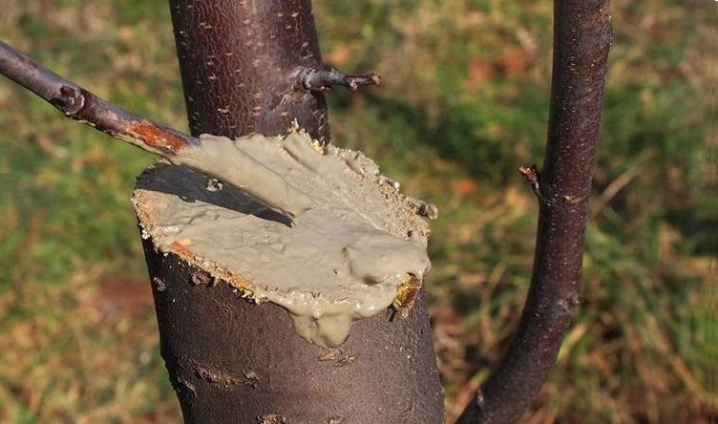
Useful Tips
Many gardeners recommend using a simpler method, planting the plum with a drill. Carrying out such actions will allow you to rejuvenate old trees by adding missing branches.
To do this, you need to perform a number of actions.
- They clean the bark from dust and dirt.
- A scion is chosen, and a drill with the required diameter is selected for it. Its diameter should be 2 mm less than the cutting.
- The cutting is cleaned taking into account the depth of the hole drilled in the tree.
- Having drilled the trunk and cleaned the stalk, it is hammered into the hole, after which it is tied with material with garden pitch.
Use a drill or screwdriver for this. Electrical tape is taken as a limiter, it will not allow making the recess deeper than necessary.















The comment was sent successfully.